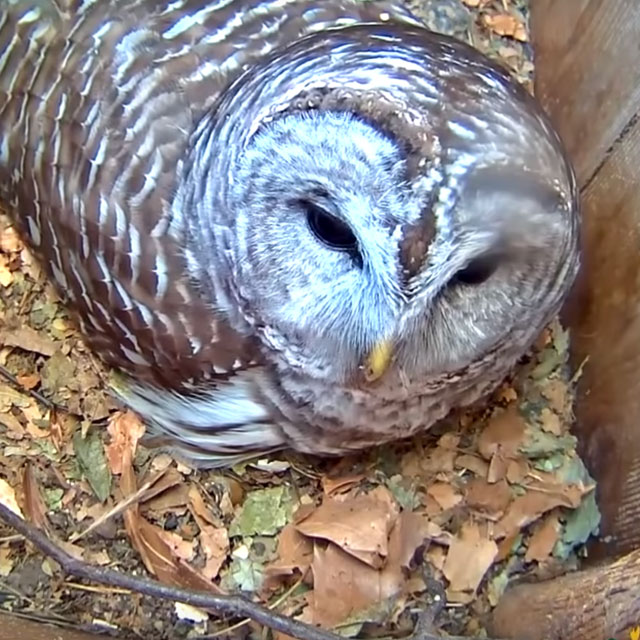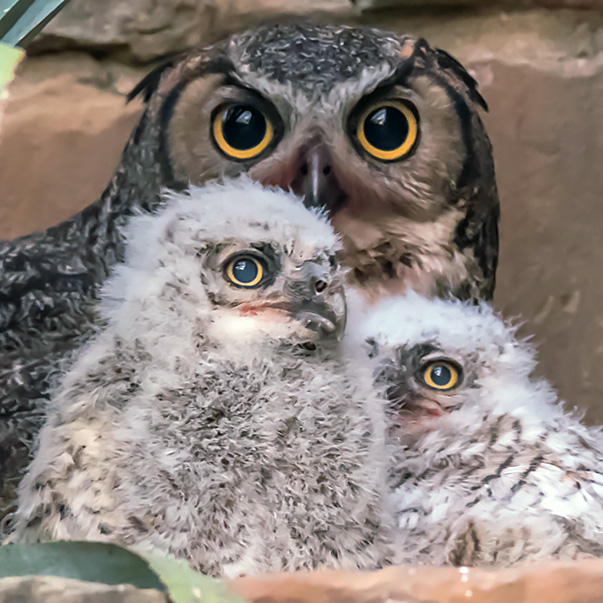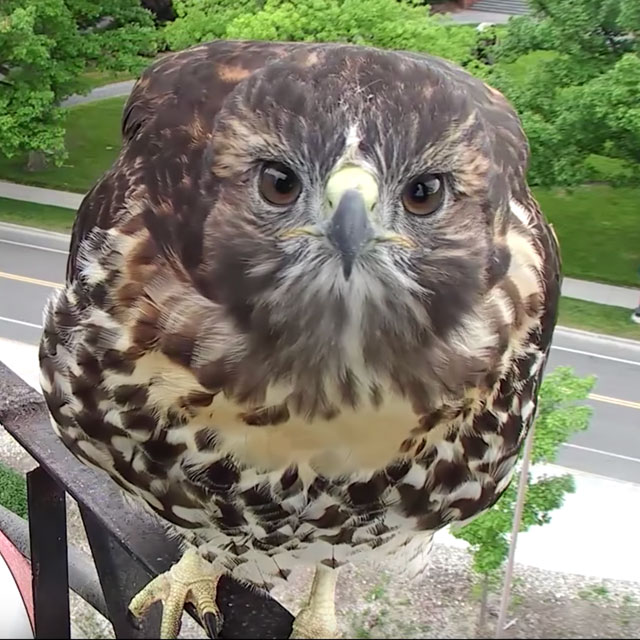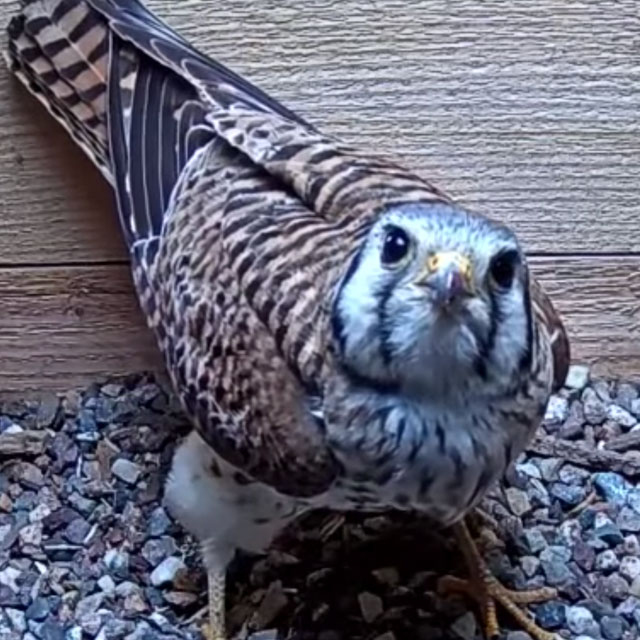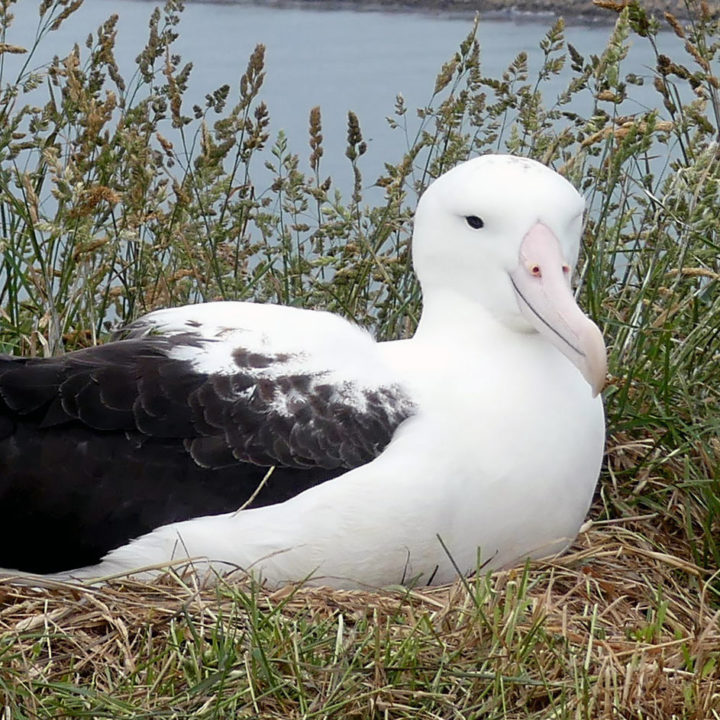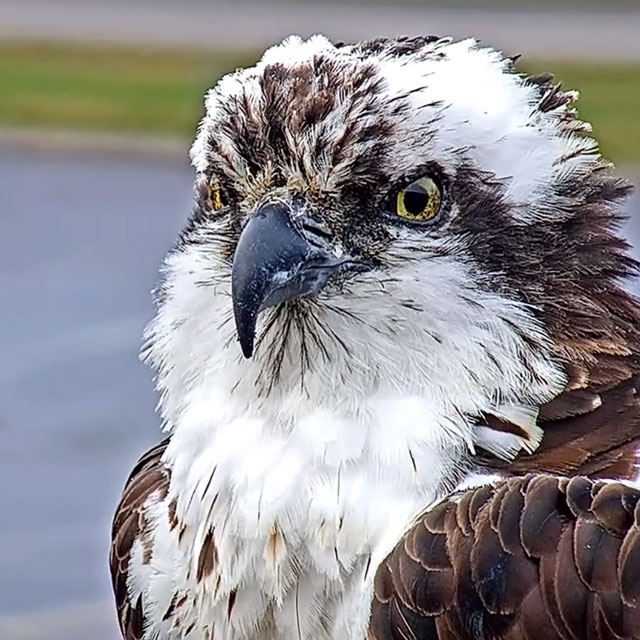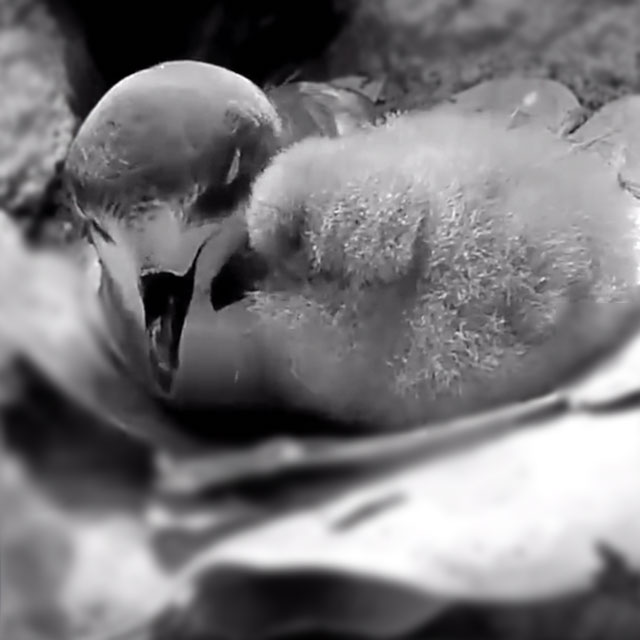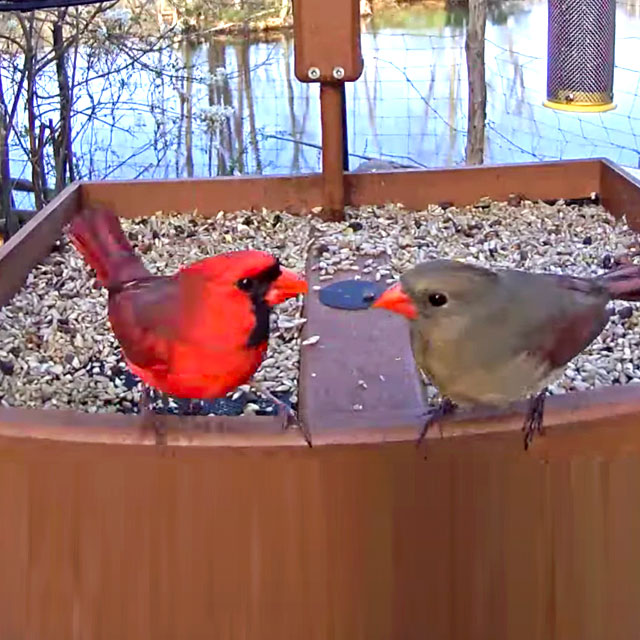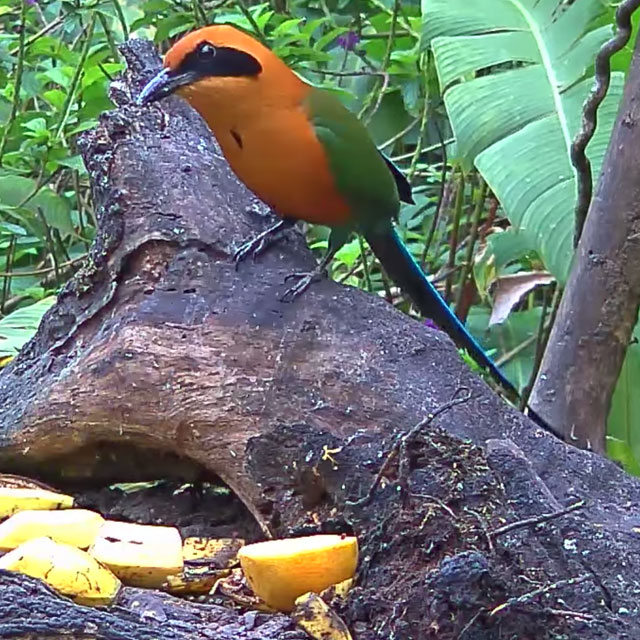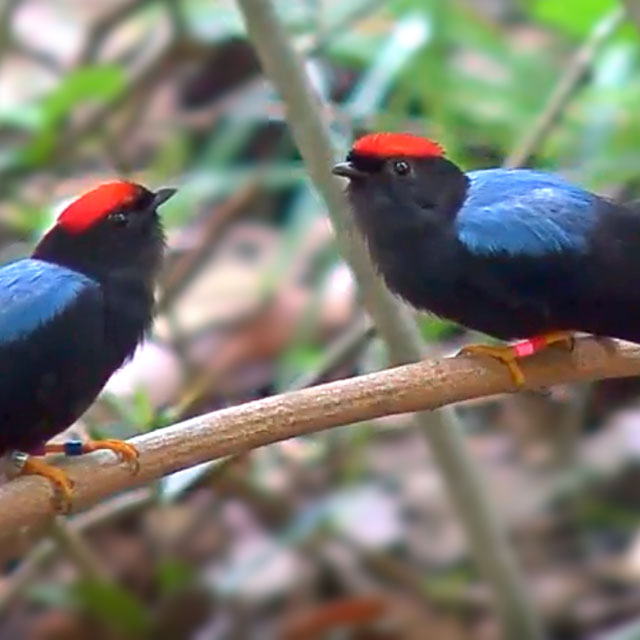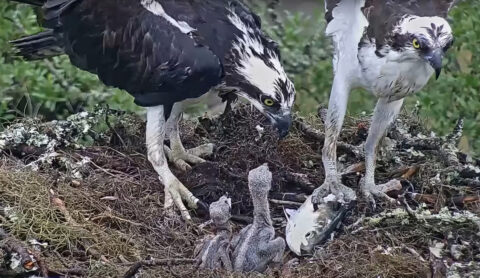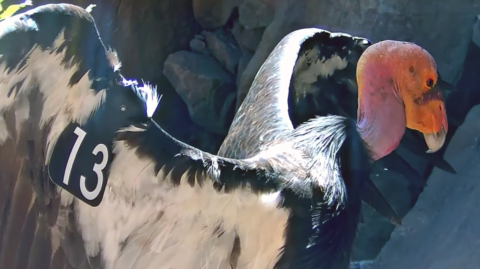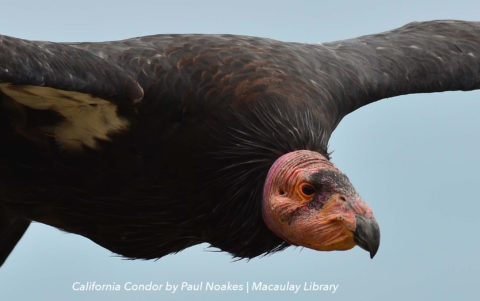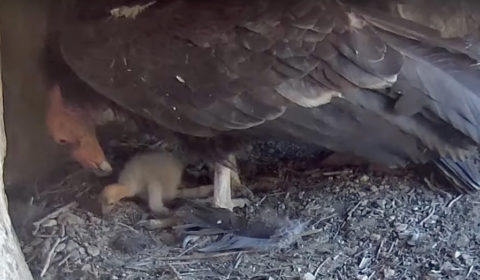Video Highlights
-
Toms Canyon California Condor Chick Fledges! Watch The First Flight Over the Canyon – Nov. 15, 2022
-
Dad Arrives To Feed Toms Canyon Condor Chick In The Nesting Cave – Nov. 10, 2022
-
California Condor Chick Scales The Cliffs Of Toms Canyon – Nov. 2, 2022
-
Toms Canyon California Condor Chick Explores The Cave And Plays With Feather – Oct. 27, 2022
News
-
April 10, 2024 Most Watched Nest Cam Highlights From Bird Cams!
-
November 20, 2022 California Condor Cam Timeline
-
May 17, 2022 California Condor Cam Goes Live From Toms Canyon
About the Nest
This year’s California Condor Cam experience focuses on a new nest in Tom’s Canyon, featuring #462 (male) and #846 (female).
#462 was wild-hatched in 2008 by foster parents, male #247 and female #79 out of a Huttons Bowl nest, the same territory featured in last year’s Condor Cam. #462 has nested twice before in 2018 and 2020; both times in Tom’s Canyon with previous mate, female #594. The pair successfully fledged chicks, female condor #926 and male condor #1048. Condor #1048 fledged at the end of 2020 when he was chased out of his nest by male condor #374 and was raised post-fledge solely by #462.
This is five-year old #846’s first year nesting. #846 also fledged out of Huttons Bowl in 2016 by parents #374 and female condor #79 from the same cavity that was live streamed last year. #846 is famous for taking a long-range flight up to Mt. Whitney in 2020.
Other interesting facts:
- Male condor #374 paired with #462’s previous mate, female condor #594 over the 2021 breeding season and their nest was last year’s live streamed Condor Cam in Huttons Bowl.
- #462 and #846 were both raised by female condor #79, who was #462’s foster parent and #846 biological parent.
- Male condor #247, who pulled last year’s Huttons Bowl chick from its nest (#374 and #594’s chick), is #462’s foster parent.
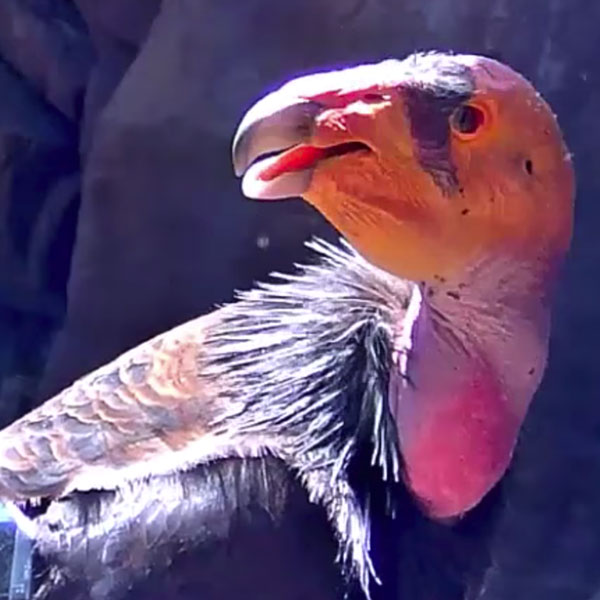
About the Condor Recovery Project
California Condors are critically endangered; they are on the 2014 State of the Birds Watch List, which lists species most in danger of extinction without significant conservation action. They are also listed as Endangered by the U.S. Fish and Wildlife Service and as Critically Endangered by the IUCN. All of the more than 400 condors now alive are descended from 27 birds that were brought into captivity in the early 1980s, in a controversial but successful captive breeding program.
As of 2014, there were more than 230 individuals in the wild in California, Arizona, and Baja California. The number has been rising steadily each year, as captive-bred birds are released and wild pairs fledge young from their own nests. More than 160 additional condors live in captivity at breeding programs or on exhibit at the Los Angeles Zoo, Oregon Zoo, World Center for Birds of Prey, Phoenix Zoo, Chapultepec Zoo, San Diego Zoo Safari Park, and San Diego Zoo. Condors have benefited greatly from the Endangered Species Act and from aggressive efforts to breed them in captivity and re-release them into the wild, but the survival of the species is still dependent on human intervention.
The California Condor Recovery Program (Recovery Program) is a multi-entity effort, led by the U.S. Fish and Wildlife Service, to recover the endangered California Condor. Partners in condor recovery include the U.S. Forest Service, National Park Service, Bureau of Land Management, Arizona Game and Fish Department, California Department of Fish and Wildlife, Utah Department of Fish and Wildlife, the federal government of Mexico, Los Angeles Zoo, Oregon Zoo, Santa Barbara Zoo, Chapultepec Zoo, San Diego Zoo, Oakland Zoo, The Peregrine Fund, Ventana Wildlife Society, Western Foundation of Vertebrate Zoology, Yurok Tribe, and a host of other governmental and nongovernmental organizations.
The Recovery Program is now in the final phase of recovery, focusing on the creation of self-sustaining populations. The Program is placing increased emphasis on the captive-breeding and reintroduction of California Condors to the wild and the management of that wild population. These efforts combine trying to reduce the threat of lead with actively managing nesting in the wild to increase the number of wild-fledged chicks.
The goal of the California Condor Recovery Plan is to establish two geographically distinct self-sustaining populations, each with 150 birds in the wild and at least 15 breeding pairs, with a third population of condors retained in captivity. As the Recovery Program works toward this goal, the number of release sites has grown. There are three active release sites in California, one in Arizona, and one in Baja California, Mexico.
Acknowledgements
The effort to create a livestreaming cam on a wild condor nest could not have happened without the effort, funding, and expertise of a wide consortium of collaborators.
About Cams
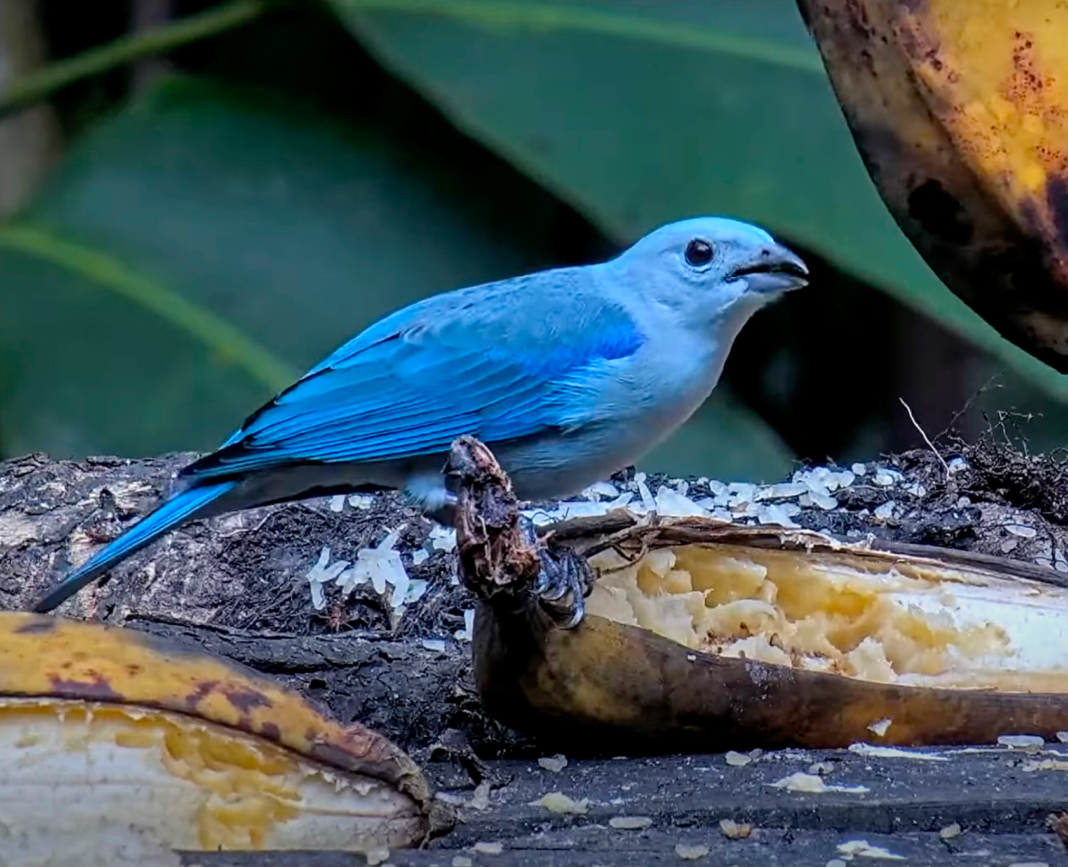
The Cornell Lab Bird Cams connects viewers worldwide to the diverse and intimate world of birds. We work to make watching an active experience, sparking awareness and inspiration that can lead to conservation, education, and engagement with birds.
Our viewers tell us that watching the cams is a life changing experience: an unprecedented learning experience that they liken to virtual field trips or field biology in their living room. We’re excited to continue sharing and learning with the community as we watch the world of birds together.

Bird Cams is a free resource
providing a virtual window into the natural world
of birds and funded by donors like you
Pileated Woodpecker by Lin McGrew / Macaulay Library
